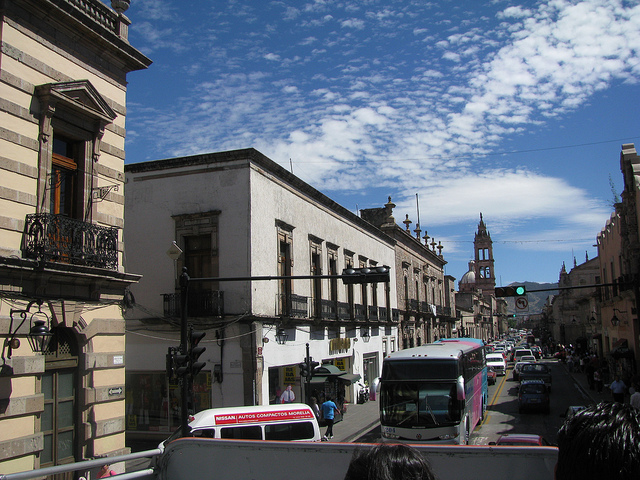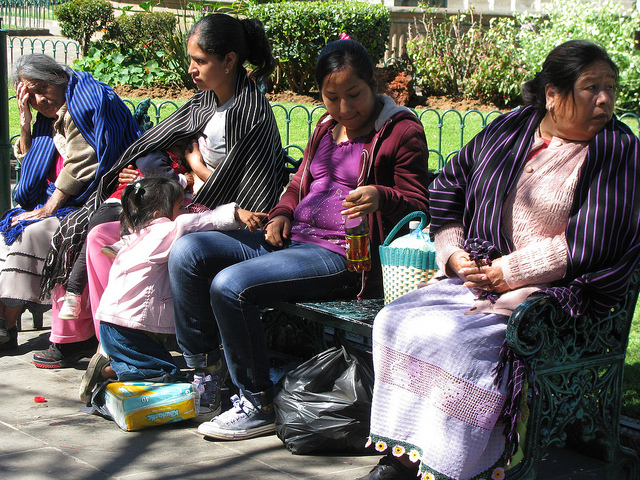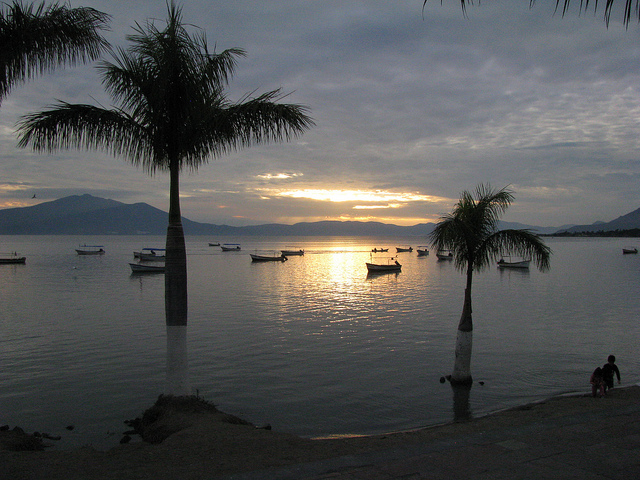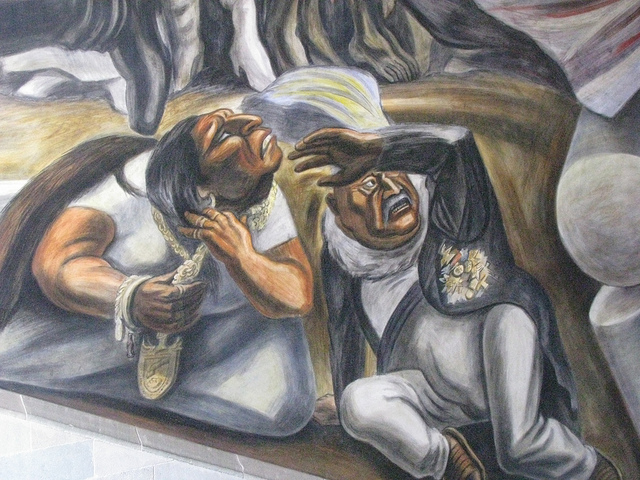The large square in front of the sanctuary is anchored by a statue of José Maria Morelos, just steps away from another major sight: the aqueduct of Morelia which brought water into the city’s center from 1657. This 1800 metre long structure is one of the best preserved aqueducts in the world and definitely one of the icons of the city. This was the turning point for our bus tour and we started to make our way back to the Plaza de Armas. All the streets were full of people now as the carnival celebrations had already started.

The famous aqueduct of Morelia
Once our bus tour was finished we walked through the town’s centre which was bustling with people celebrating carnival. The streets were packed with revelers and traffic on the main street had come to a standstill. Rodrigo explained to me that every year residents from local neighbourhoods get together and construct a so-called “torito de petate” (literally translated: “a little bull made from reed”), which is a symbol of their specific working-class neighbourhood.

A torito de petate, part of Morelia’s carnival traditions
The dance with the little bull stems back to the late 1500s and is said to refer to the fact that bulls that could only be owned by the Spanish colonial landowners. Local indigenous people would imitate and make fun of the Spaniards by creating miniature bulls from light-weight materials like reed. Today many of these “toritos” can be up to five metres high with a weight of up to 130 kilograms. Nowadays these little bulls are accompanied by bands and by men dressed as women who party through the streets.

Carnival in Morelia
From here we headed to the Museo del Dulce (the Museum of Sweets) which is housed in a former 18th century mansion. Lupita, our museum guide, was dressed in a historic costume and explained the origin of the local candy to us. “Ate”, as it is locally called, is a fruit paste candy made from a quince paste that is combined with equal parts of cane sugar in a copper pot. The fruit and sugar mix is stirred for six minutes until it is ready to be poured into moulds following which it is allowed to harden. Candy-making is a skill that was introduced to Morelia by Spanish nuns in the 16th century.

Costumed interpreters in the Candy Museum of Morelia
On our walk through the Candy Museum we discovered many other local sweets, chocolates, cakes and even ice cream. The museum also has a retail shop where people can buy traditional toys from Michoacán, dolls, nutcrackers and souvenirs. All the employees are dressed up in historical costumes, and visitors can even try on some historic Mexican dresses. Rodrigo and I sat down in the museum’s coffee shop and I got to try some “ate” candy with cheese.

Ate with cheese
Rodrigo then took me to my hotel, the Hotel Catedral, so I would be able to check in and leave my luggage there. This upscale historic hotel is located in a stately 16th century mansion with a large inner courtyard and arcaded walkways. The hotel has recently been renovated from top to bottom and now features all the conveniences of the 21st century. This was going to be a great base for my explorations of Morelia.

The eautiful lobby of the historic Hotel Catedral




